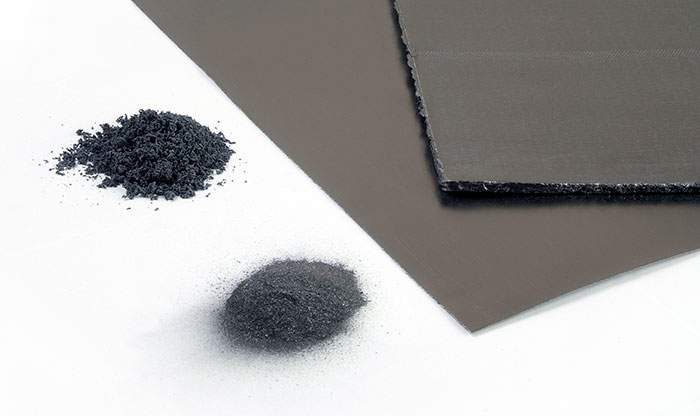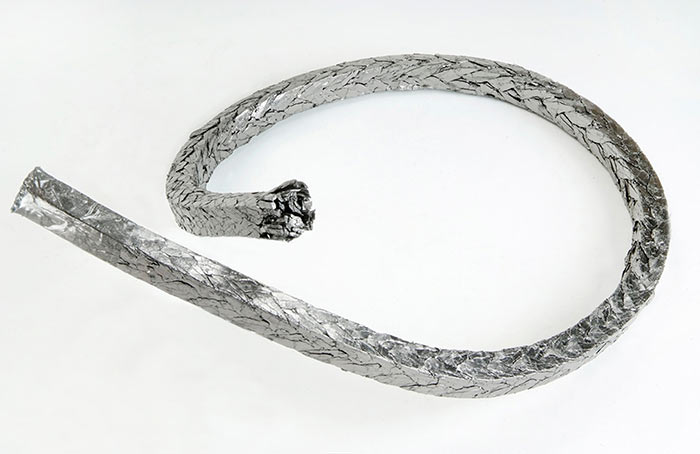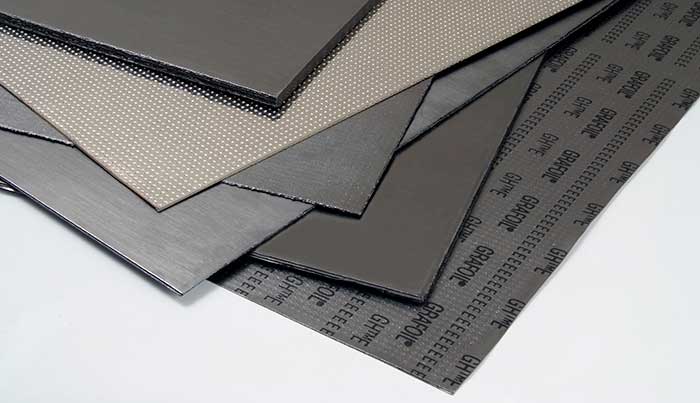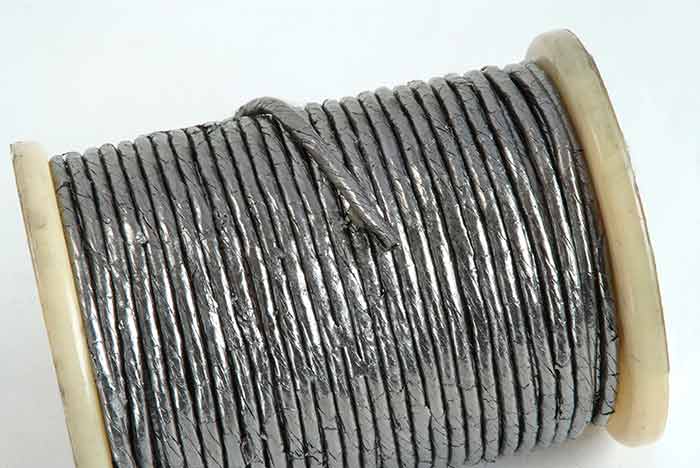In chemistry, a strong oxidizer is a substance (like chromic acid) that can cause other substances (like seals and gaskets) to lose electrons. So, an oxidizer is a chemical species that undergoes a reaction that removes one or more electrons from another atom.
 Image 1. Powder resin graphite (Courtesy of author)
Image 1. Powder resin graphite (Courtesy of author) Image 2. Thermabraid braided gasket packing
Image 2. Thermabraid braided gasket packingDeadly Force
A West Texas fertilizer company storage and distribution facility caught fire on April 17, 2013. As firefighters attempted to extinguish the blaze, the plant exploded with the force of 10 tons of TNT, killing 15 people and injuring 200. It destroyed 60 nearby homes and left a 93-foot-wide crater where the plant once stood. All said, it is important to choose the right sealing material for strong oxidizers. There are multiple products on the market for the chemical processing, oil and gas, mining and aerospace industries. A fluoropolymer, such as polytetrafluoroethylene (PTFE), can handle most strong oxidizers, as long as the temperature is below 260 C (500 F). This is also true with a modified PTFE because they are chemically inert and stable. Strong oxidizers will weaken most other material to various degrees. Much of a material’s capability to withstand a strong oxidizer depends on the used concentration, the service temperature and the service pressure. Therefore, consult with the sealing material manufacturer to ensure compatibility.How Graphite Handles Strong Oxidizing Environments
Graphite starts as natural mineral flake and is mined in various parts of the world. The flakes form a layered structure of completely crystalline graphite, which is essentially elemental carbon. In this form, it is used for products like powdered lubricant and lead in pencils. It has excellent lubricity in this form. Image 3. Laminated graphite
Image 3. Laminated graphiteFlexible Graphite Pitfalls
Flexible graphite may be susceptible to chemical attack in the presence of strong oxidizing fluids, including air at extremely high temperatures. These include liquids such as 20 percent concentration of nitric acid or a 98 percent concentration sulfuric acid, the same chemicals that are used to break down mined graphite into expanded graphite flake. Some flexible graphite compositions include oxidation inhibitors or are physically structured to extend temperature capability when exposed to these extra strong oxidizers. Image 4. Thermacord flexible graphite packing yarn
Image 4. Thermacord flexible graphite packing yarnStrong Oxidizers for Flexible Graphite
Aqua Regia
Bromine (dry)
Calcium Chlorate
Calcium Hypochlorite*
Calcium Nitrate
Chlorazotic Acid
Chlorine Dioxide*
Chlorine Trifluoride
Chloric Acid
Chloroazotic Acid
Chloronitrous Acid
Chromates
Chromic Acid
Chromic Anhydride
Chromium
Chromium Trioxide*
Dichloropropionic Acid*
Dichromates
Hydrogen Dioxide
Hydrogen Peroxide
Lime Nitrate
Lime Saltpeter
Molten Alkaline
Nitrates
Nitric Acid*
Nitric Oxide
Nitrocalcite
Nitrohydrochloric Acid
Nitromuriatic Acid
Norge Niter
Norwegian Saltpeter
Oleum (Fuming
Sulfuric Acid)
Oxygen*(above +600 F)
Ozone
Perchloric Acid
Permanganate Solutions
Persulfates
Perbenzoates
Perborates
Peroxide Potassium
Bichromate
Potassium Chlorate
Potassium Chromate
Potassium Dichromate
Potassium Nitrate
Sodium Chlorite*(over 4%)
Sodium Hypochlorite*
Sodium Peroxide
Sulfuric Acid
Sulfur Trioxide*
*Flexible graphite may be acceptable in specific temperature or concentration ranges.

